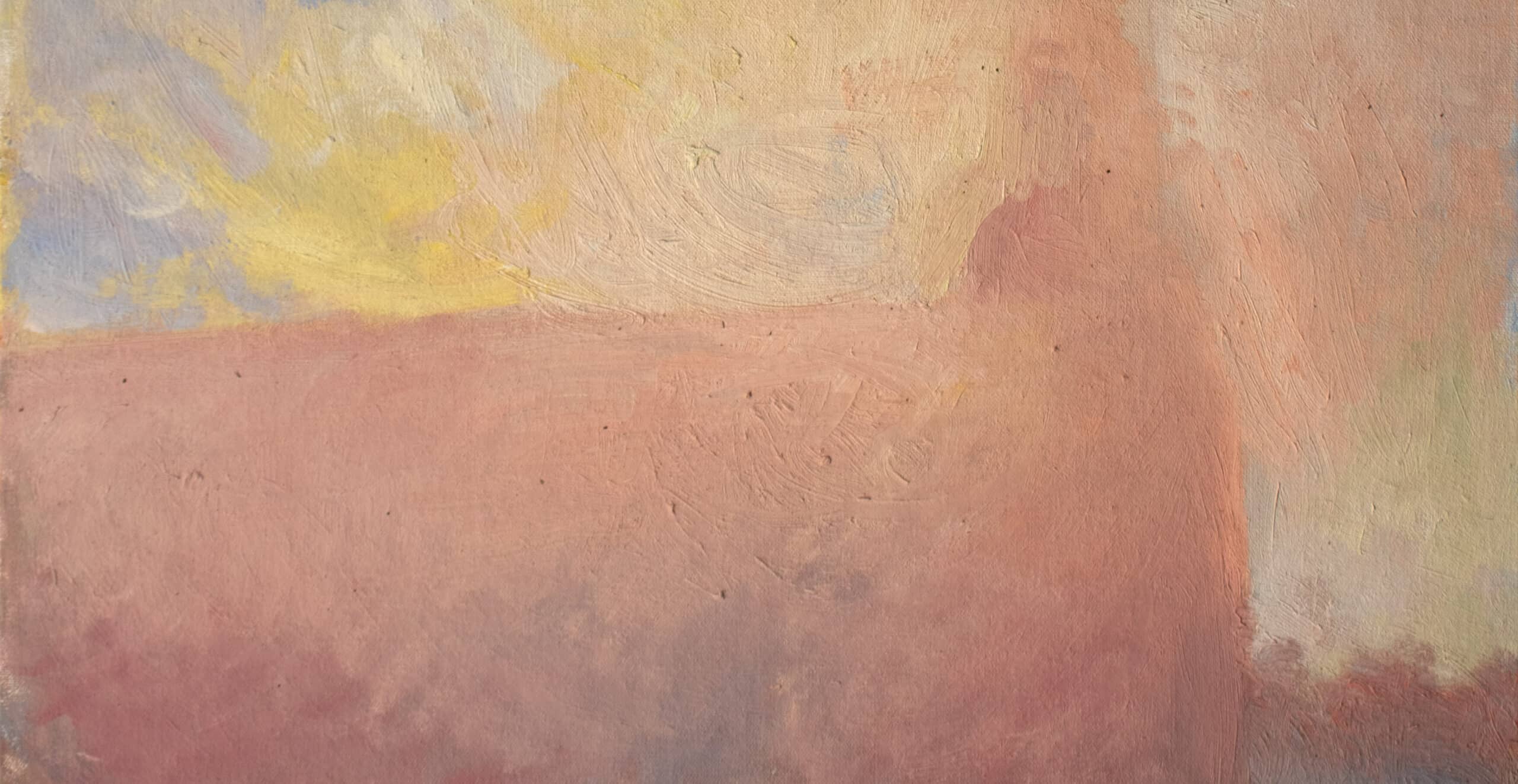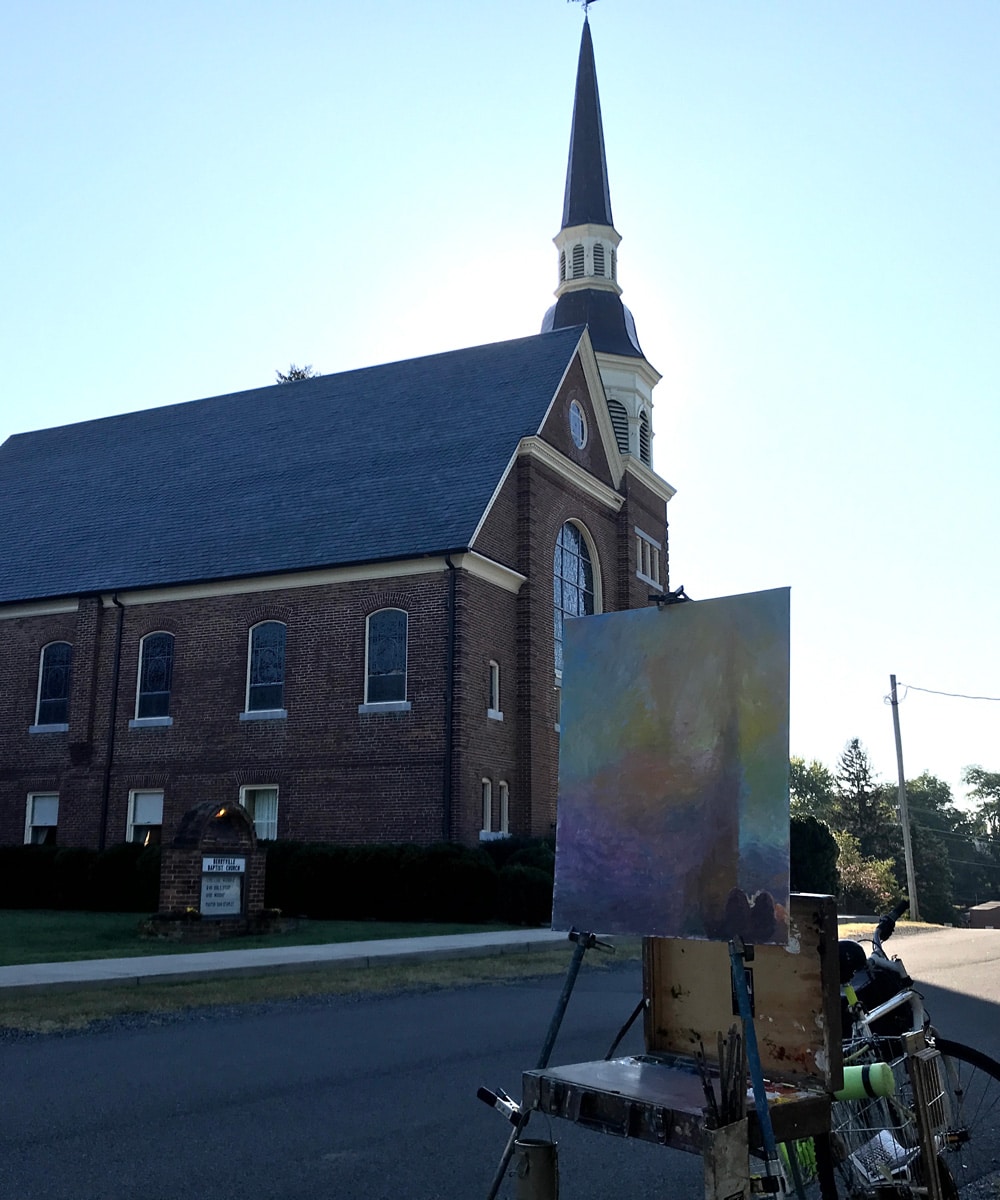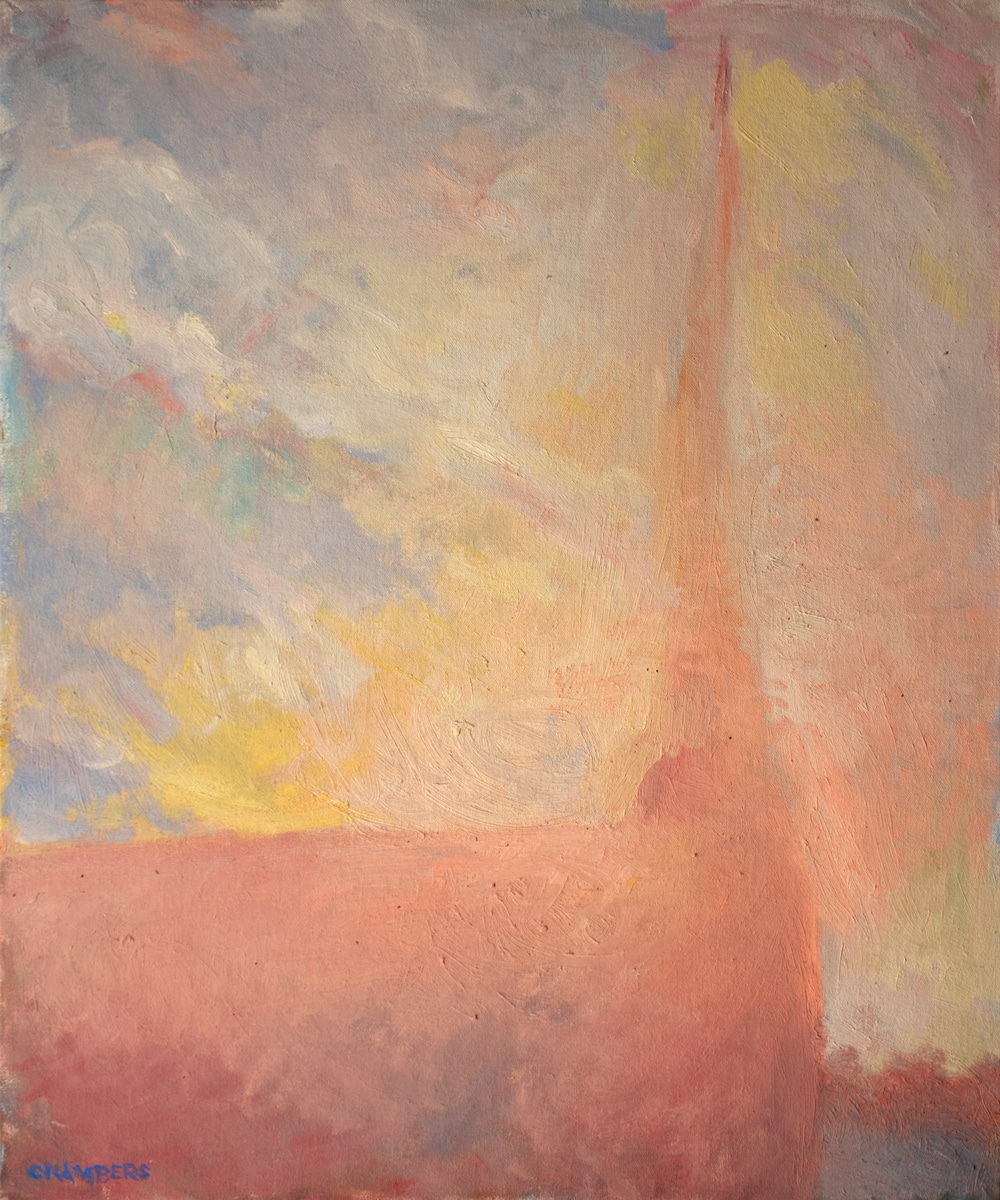Ever since I was diagnosed with Retinitis Pigmentosa (RP) thirty years ago, I have made annual visits to a retinal specialist at either Johns Hopkins Wilmar Eye Institute or the Scheie Eye Institute at University of Pennsylvania. These two clinics are among the best in the world at treating retinal diseases and staying on top of the latest treatments, as well as keeping abreast of the search for cures. The level of knowledge at these clinics is top-notch. The doctors are passionate in both their search for a cure as well as their treatment of those dealing with eye diseases. I’ve yet to meet an unkind doctor or assistant, which says a lot. I’ve met more than my share of oof docs and assistants in the medical field. We all have, right?
I remember a discussion with Dr. Hendrik Scholl at Hopkins in which we discussed challenges I faced when painting landscapes. I mentioned that the glare from the sun or a bright sky can take over a scene. “Take over a scene? What do you mean?” asked Dr. Scholl. I explained that the bright light sort of halos in front of solid objects. For example, instead of seeing the limbs of a tree against the sky, the bright blue of the sky overlaps the tree’s perimeter. Or, if the sun is rising behind a rooftop, the yellow of the sun will spill over the roof’s edge to almost halfway down the roof, leaving no outline of the roof.
“Are there any kind of sunglasses that would reduce the glare when I am painting outdoors so that I can see like I used to, the way everyone else sees?” I asked.
“Maybe. But I’ve got a better idea. Why don’t you show us what you see? You’re a professional painter. Use your skills to show us how a person with RP sees. I’d love to know.”
“Just paint the scenes the way thing appear to my diseased eyes?”
“Yes! All we specialists know is the charts and graphs and scans that we record in these visits. But we cannot get in your head and see what you see. You could show us. Give us a view few are able to do. Educate us.”
Now there was a novel idea.
And Dr. Scholl wasn’t the only one interested in how things appear to me. I am asked often, “What do you see?” People assume that with RP, that whatever isn’t normal looking to me is black, as if I am looking at a sheet of black construction paper with holes cut away where normal vision remains.
That isn’t remotely the experience of mine nor of anyone else with RP. As I explained in my page Title, what we don’t see is filled with imagination, just as it is for you (assuming you have normal vision). For example, if I ask you what your brain sees beyond your field of vision, it’s not black. Instead, you’ll tell me what you remember seeing in the areas behind you (“there’s a door and a window, a table with flowers…”).
After my visit with Dr. Scholl, I started thinking about how I would paint what I actually see versus what I thought I should be seeing. I had been correcting what aberrations my RP-affected eyes were taking in. If there was glare, I waited for the light to shift and the glare disappeared and I painted the scene without the glare. My painting may have been true as observed with normal eyes, but it wasn’t true to my RP eyes.
It took a bit of practice to shift from painting what everyone else saw (and what I used to see) to painting what my eyes saw in their non-normal state. I practiced without my paints; I’d be riding in the car and I’d paint the scenes passing by. When the morning sun blew out all details from the scene, I’d paint it just that way.
When I began painting from my easel, I realized I had to paint quickly because the effects of the glare changed in a matter of minutes as the sun moved across the sky. Paintings had to be completed in fifteen to twenty minutes. Sometimes I would paint three paintings in forty-five minutes to an hour. Compare this to my usual sessions of spending three hours on a single painting.
And I had to paint small. Instead of painting on canvases sized 12×16″ to 24×30″, I painted on a 5×7″ or 8×10″ canvas, enabling me to cover the entire canvas in a short span of time. I was painting the effect of light, similar to the “impressions” that Claude Monet and his friends painted. No longer could I focus on the details of a house and the greenery of its landscaping. Instead, I was painting the effect of the light of a moment in time. A chapel on a gray, foggy morning was much different than it was when the sun was blazing its pink morning light upon it on a bright June morning.
What do I see? Let me show you. It’s quite wonderful. And different.



